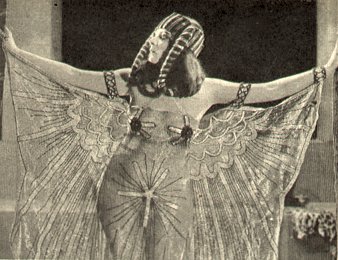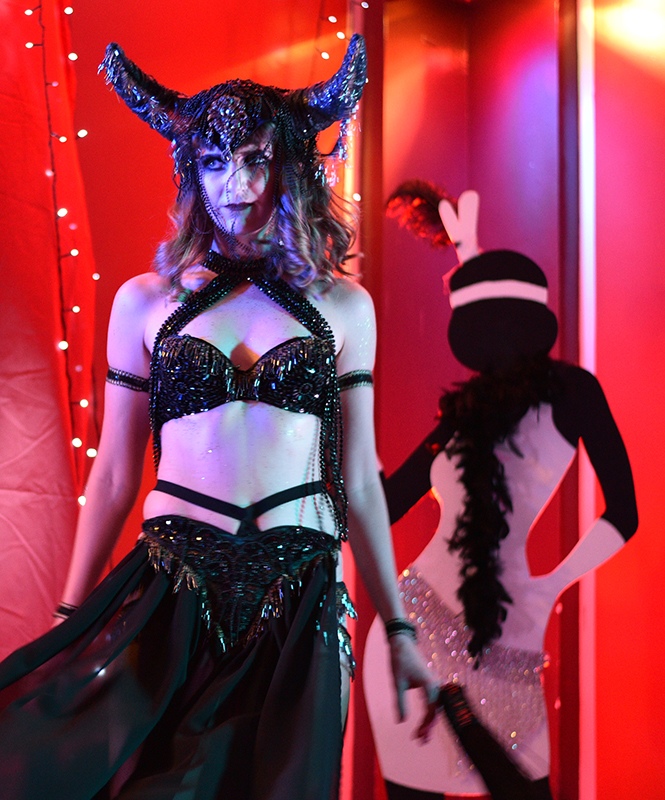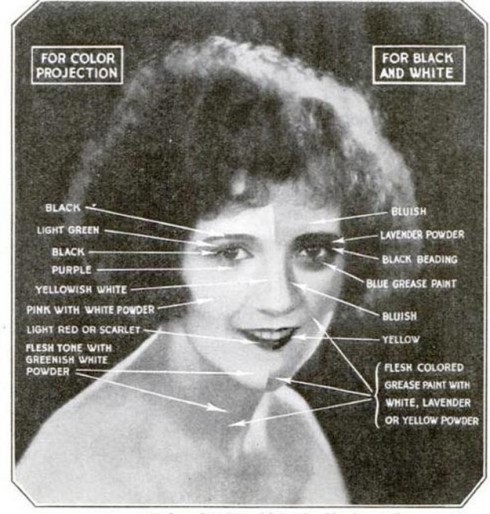|
Song choice A song that I’d had loitering in the back of my mind for some time, and thought might have act potential was I Let Love In by Nick Cave. It's a dark, gothic love song. I realized the lyrics were unexpectedly synchronous with the Ishtar concept I was planning for my Dark Act. I’m a little bit of a Nick Cave fan (ok fine, full disclosure – when he played at the Civic in Auckland recently I ended up going to both nights of the gig and went up the front with the Nick touchers). So I was fairly confident I wasn’t going to get sick of hearing this song over and over while I rehearsed. Do you want to read the lyrics? Ok then, if you insist: I Let Love In – Nick Cave
The act itself I’m still learning to perform to it's full potential, currently it's in the refinement and polishing phase. But I love it. I'm very much looking forward to seeing how it evolves and what it’s final form takes. If you’ve seen The Dark Act, or Coney Bow’s Dancer in Green, does having an idea of the conceptual underpinning of this act make you consider the act in a different way? Is that a good thing? Or do you prefer to take performances at face value and make your own meanings of them? If you are a performer, how do you go about conceptualising your own acts? Feel free to comment! Parts 1 & 2 of this series on act conceptualisation can be found on the main blog page
0 Comments
The character I was attracted to the idea of doing an act based on the goddess Ishtar, as Theda Bara might have played her. Ishtar was the Babylonian/Assyrian goddess of love, the night, fertility, sexuality, and war, but who had a tendency to destroy her lovers. This was the perfect vamp character – exotic, seductive and destructive.
The costume I began to research Ishtar for costume inspiration. I was interested in Eastern-inspired 1920s costumes and sought out archival imagery as a starting point. Many sketches of swathes of shimmering beaded fringe and loops of beading were made. As a goddess of the night, I decided her dress must be dark and glittery. The sparkle was important not only for glamour, but to pick out the contours of the black costume, so it doesn’t disappear against black stage backgrounds. I had a hunch the contrast between the black costume and my skin under stage lights would make my skin glow almost supernaturally. I'm facinated by classic burlesque and showgirl headdresses, and wanted to take on the technical challenge of making a headdress with significant structural demands (my first). As Ishtar is referred to as a 'cow moon goddess', I decided to construct a horned headdress. The horns were literally made from number eight wire (or a wire gauge that was pretty damn close), and I constructed the form for the horns out of packaging that a motorcycle magazine had come in. The layered skirt is based on representations of Ishtar's dress in bas-relief carvings (above). The cape references the wing forms usually depicted behind her. She’s most often depicted naked, wearing only an ornamental headdress, an ornate necklace and bracelets at her wrists. These costume elements are what I strip down to, forming the basis of my final reveal. On the eve of my first performance my flatmate told me the underwear piece that I constructed looked 'like sparkly pubes’. Success! Face I accompanied my luxe-gothic costume with period-appropriate makeup. This was based on photos of Theda Bara and a Russian actress that I had used for costume inspiration. Conveniently the Kryolan concept store had just opened in Newmarket (a glorious wonderland!). There I was able to find the blackest of black and cochineal coloured eye shadows to recreate 1920s makeup. The actual makeup they used when filming silent movies was rather unusual. In order to be able to be registered by the primitive cameras, blues, lavenders and yellows were used to contour the face. I suspected it looked truly bizarre in real life, so I aimed to approximate how the make-up would have appeared on screen, rather than in reality. Part 3 of 3 to follow...
What is the thought process behind creating an act? Backstage at a show towards the end of last year I had a conversation with burlesque performer Coney Bow about act conceptualisation. She mentioned that her Dancer in Green act was based on the Hollywood Ballet Green Duet between Cyd Charisse and Gene Kelly in the movie Singin' in the Rain. In this bar scene Charisse’s character is drawn from her chair into a dance with Kelly’s character Don Lockwood. Coney Bow’s act is based on the extrapolation and interpretation of what Charisse’s character would do if Don didn’t turn up. The act explores how Charisse's character would move and act if she were dancing with herself. I found it an interesting discussion, her comments gave me an insight into her act that I otherwise wouldn’t have had. While this perspective is by no means essential to enjoying her act, I found it added an extra layer of depth to her performance. As someone who is very much the type of person who goes around art galleries reading the wall labels, I get a kick out of hearing the concept behind people’s acts. As with wall labels, I don’t think a conceptual explanation is essential to understanding or enjoying the art itself, but I like how the contextual information suggests ideas that I would have otherwise been unaware of. This is partly why I loved hearing about the inspiration for Coney Bow’s performance, as it allowed me to view her act in an entirely different way.
It begins… The starting point for this act was being invited to take part in a 1920s themed show, The Cat’s Meow, for the Rock n Roll Circus. I had been thinking for some time that I wanted to develop a new ‘classic’ routine. In the year or so since I’d last created a classic act, my style as a neo performer had become more developed and I had grown a much better sense of who I had become as a performer. However, the classic side of my performance had remained comparatively underdeveloped in style. But that set an interesting challenge – how would neo performer Amourous Ava perform a classic routine? Or more accurately, because you can’t take the 'neo' out of a neo performer – how would she perform a neo-classic routine? I also set myself another challenge – no Charleston. I knew other performers would be doing up-tempo numbers, so I wanted to do something that would set my act apart a little, play to my skills, and to push myself in a different direction. I’d also been watching a lot of classic-style acts and wanted to challenge myself to do a slow number. My usual performance style is high energy, frenetic and comedic. This to a certain extent is because of my physicality – I’m slight of build, so to get any sort of decent movement out of my costume I often need to move very, very fast. Torque is not my friend. I also tend to move quickly to dispel nervous energy, so I wanted to learn to control and direct it… and just for kicks see what would happen if I didn’t try to be funny. It was terrifying... Part 2 of 3 to follow...
|
AuthorAmourous Ava Archives
February 2015
Categories
All
|


















 RSS Feed
RSS Feed
